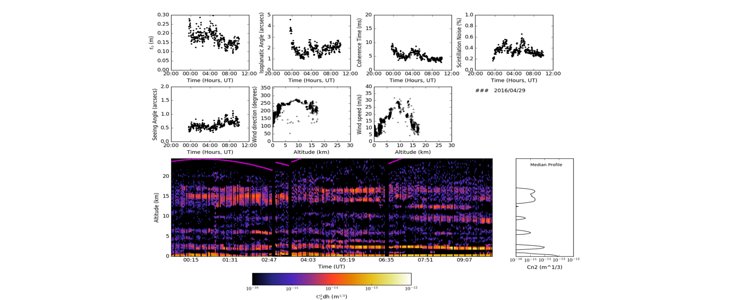
14 June 2016
After the Provisional Acceptance Europe of Stereo-SCIDAR on 5 April 2016, the instrument was transported to Paranal for its integration and commissioning on an Auxiliary Telescope.
During the last nights of the commissioning run, the joint ESO-Durham Stereo-SCIDAR team validated the system performance and recorded the first scientific data in the final configuration mode.
The commissioning data above show an example profile from the night beginning 29 April 2016. These results from just one night show the complex evolution of the turbulence above Cerro Paranal. Apart from a short test campaign in 2007, we have not been able to study the atmosphere above Paranal in such detail before. The new data coming from Stereo-SCIDAR will be used for the design as well as the operation of wide-field Adaptive Optics systems on Cerro Paranal and on Cerro Armazones.
The top two rows of figures show the evolution of the integrated atmospheric parameters throughout the night as well as the turbulence speed and direction profile. The lower panel shows the evolution of the turbulence altitude distribution throughout the night, with altitude shown vertically and time running horizontally. The colour indicates the strength of the turbulence, and the magenta line marks the maximum profile altitude. The many short vertical breaks are pauses for field derotation to correct for the sky rotation due to the altitude-azimuth type telescope and the longer breaks (approximately 5 minutes) are for target changes. As can be seen in this panel, some turbulent layers appear stable and are visible for almost all of the night, for example at the ground level and at 2.5 km. Other layers are more transient, with layer strengths and altitudes varying over the course of minutes.